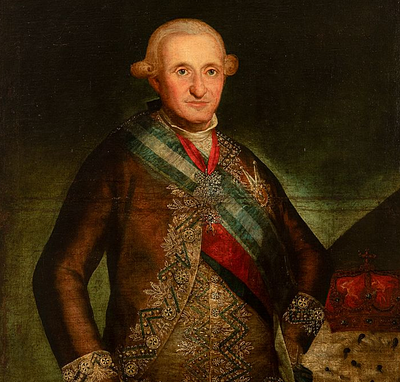Spanish school; second third of the 17th century. "The Ecstasy of San Francisco". Oil on canvas. Relined.
Lot 1
About Seller
Setdart Auction House
Carrer Aragó 346
Barcelona
Spain
Setdart Subastas was born in 2004 and is currently the first online art auction in Spain with solidity, prestige and reliability guaranteed by our more than 60,000 users. Setdart has a young, dynamic and enterprising team ready to successfully manage the purchase and sale of art works through custom...Read more
Estimate:
EUR€3,500 - EUR€4,000
$3,608.25 - $4,123.71
Absentee vs Live bid
Two ways to bid:
- Leave a max absentee bid and the platform will bid on your behalf up to your maximum bid during the live auction.
- Bid live during the auction and your bids will be submitted real-time to the auctioneer.
Bid Increments
| Price | Bid Increment |
|---|---|
| EUR€0 | EUR€10 |
| EUR€200 | EUR€25 |
| EUR€500 | EUR€50 |
| EUR€1,000 | EUR€100 |
| EUR€3,000 | EUR€200 |
| EUR€5,000 | EUR€500 |
| EUR€10,000 | EUR€1,000 |
| EUR€20,000 | EUR€2,000 |
| EUR€50,000 | EUR€5,000 |
About Auction
By Setdart Auction House
Sep 22, 2021
Set Reminder
2021-09-22 09:30:00
2021-09-22 09:30:00
America/New_York
Bidsquare
Bidsquare : 22nd September - ARAS JÁUREGUI Private Collection - Old Masters, 19th & 20th Century
https://www.bidsquare.com/auctions/setdart-auction-house/22nd-september---aras-j-uregui-private-collection---old-masters-19th-20th-century-7427
ARAS JÁUREGUI Private Collection - Old Masters, 19th & 20th Century Setdart Auction House sofia@setdart.com
ARAS JÁUREGUI Private Collection - Old Masters, 19th & 20th Century Setdart Auction House sofia@setdart.com
- Lot Description
Spanish school; second third of the 17th century. "The Ecstasy of San Francisco". Oil on canvas. Relined. It has missing repainting and frame from the 19th century. Measurements: 121 x 91 cm; 147 x 116 cm (frame). In this canvas, of devotional character due to its composition, clear and simple, the author offers us an image of Saint Francis of Assisi, dressed with the Franciscan sackcloth, with a cord of three knots tied to the waist that can hardly be appreciated. The three knots represent the three vows of poverty, chastity and obedience. The saint is depicted full-length, standing in front of a landscape with a low horizon and clear sky, with his gaze directed towards the sky and his arms open, in whose hands the stigmata can be seen. It is therefore a representation of Saint Francis, in ecstasy, receiving the stigmata. The story tells how Saint Francis, while retired on the mountain, had a vision in which Christ appeared to him, from whose wounds rays emerged, causing the saint stigmata on his hands and feet. In this particular case, it is worth noting the presence of two figures, one running over the bridge and the other reading on the right-hand side of the composition. Due to the presence of the figure who is reading, this may be a narrative scene representing the saint at various points in his life. Saint Francis (Assisi, Italy, 1182 - 1226) was the son of a wealthy Italian merchant. Baptised John, he soon became known as "Francesco" (the little Frenchman), because his mother came from that country. His youth was joyful and carefree until the age of twenty-five, when he changed completely and began to dedicate himself to the service of God, practising the Gospel ideal: purity, detachment and joy in peace. Francesco renounced the great inheritance he had received from his parents and decided to live poorly, giving the example of an authentic Christian. He soon had several young disciples, called by the saint "order of the Friars Minor". In 1210, Pope Innocent III granted them the foundation of the new order and encouraged them in their evangelical work. During a retreat on the mountain, Christ appeared to him, and legend has it that rays came out of his wounds, causing Francis various stigmata. He was a legendary figure during his lifetime, considered a living relic. Likewise, his exquisite poetry and his familiarity with nature add the most human accent known in a saint, as can be seen in his "Canticle to the Sun".
- Shipping Info
-
In-house shipping available. Please inquire at admin@setdart.com.
-
- Buyer's Premium



 EUR
EUR CAD
CAD AUD
AUD GBP
GBP MXN
MXN HKD
HKD CNY
CNY MYR
MYR SEK
SEK SGD
SGD CHF
CHF THB
THB
















